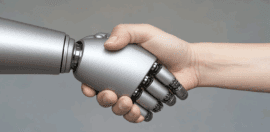Mannequin in a Wheelchair

9 October 2012 at 9:19 am
A young paraplegic model’s determination to get the fashion industry to represent people with disabilities led to her developing the world’s first mannequin in a wheelchair. Guest writer Kate Miranda meets the designer.
 Above: Sophie Morgan. Photo supplied. |
A young paraplegic model’s determination to get the fashion industry to represent people with disabilities led to her developing the world’s first mannequin in a wheelchair. Stella McCartney and Adidas showcased the “Mannequal” on London’s famous Oxford Street during the Paralympic Games.
London is one of the world’s great fashion capitals. Not just for design but for breaking boundaries. Proof of this is on display in Central London at the Adidas Oxford Street store where the Stella McCartney designed ‘Team GB’ Olympic kit is being modelled by mannequins in wheelchairs.
The Mannequal, as it is known, is the creation of Sophie Morgan, a model, TV presenter, businesswoman and artist who is also in a wheelchair. The 27 year old Briton has produced the world’s first mannequin to represent disability.
Morgan based the design on the wheelchair because it is the internationally recognised symbol for disability. “Whether you are in a wheelchair or not, it is the symbol we all use and recognise. I wanted to design something that was not too invasive because I did not want to detract from the clothing. It is not about the chair.”
At the age of 18, Morgan was contemplating a career in law but after a school graduation party she was in a car accident that left her paralysed from the waist down. She turned to art and in 2008 starred in a BBC TV show looking to discover the UKs first disabled model, Britain’s Missing Top Model, which ran on ABC2 in March last year. She came second.
The TV series and her determination to change people’s perception of disability were the catalysts for the Mannequal. Exclusivity defines the fashion industry so pitching inclusivity was always going to be a tough.
“When I was researching this idea it was very difficult because this had never been done before. Retailers had never actually catered for disabled people. My journey has been very hard. I’ve approached a lot of shops and been pushed back. I’m dealing with a very elitist area of society and it has not been easy at all.”
The stylised glossy fibreglass wheelchair was first used by British retail giant Debenhams two years ago. Having her design purchased by a major national department store was “amazing” for Morgan.
 Mannequals in an Adidas store in the UK. Photo supplied. |
The Debenhams displays didn’t last long but the Mannequal made a comeback this year after Morgan was chosen to model Stella McCartney’s new Adidas sportswear line. The Mannequal was then used by Adidas’ throughout the Paralympics to display the McCartney designed “Team GB” collection.
The achievements of disabled athletes have been transformational. The Paralympics provided a platform for people with disabilities to be out and proud. “We don’t need to hide anymore. The Paralympics have changed the way disability is perceived. It is mostly related to sport at the moment and what it does for retail is going to be really interesting.”
She believes the Mannequal would never have been displayed on the high street had it not been for the Paralympics. “The chair would not have gotten into Adidas if the Paralympics weren’t on. There’s no doubt. It would not have happened. But it is being taken out now the Paralympics are over.”
Cracking Oxford Street was a triumph for Morgan but again it was short lived. She is currently in talks with two other major UK retailers and is hoping that sponsorship deals between Paralympians and fashion labels will continue to shine the spotlight on people with disabilities.
“That’s exciting to me because for the first time ever we might have disabled people representing products.”
Morgan recently watched the Australian Paralympic wheelchair rugby team win the gold medal. She has a fondness for Australia and while watching the match she reflected on her travels throughout the country. With more than four million Australians (18.5%) having a disability – almost one in five shoppers – she would love to see the Mannequal picked up by Australian retailers.
“This is not only socially responsible; there are financial benefits in this for the retailer. It took retailers a long time to realise the value the gay fashion market.”
Morgan is hoping retailers soon realise the fashion market for people with disabilities has as much potential as the ‘pink pound’. “They are communicating with an enormous demographic. The chair is so significant for customer and retailer. In my opinion, it’s a no brainer.”
About the author: Kate Miranda is an Australian freelance journalist based in London and is a guest writer for Pro Bono Australia.








As a disability stylist, I know first hand designing, marketing, and retailing for fashion consumers with physical disabilities is both great for ROI (return on investment) and SROI (social return on investment). I agree with Sophie, “it is a no-brainer”.
Great article!